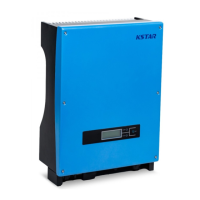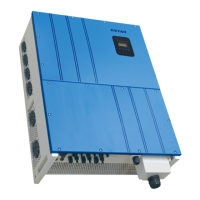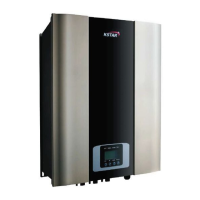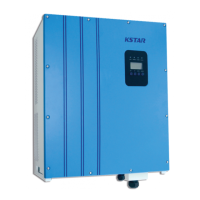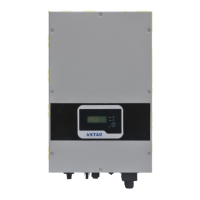What to do if my KStar KSG-3.6K-SM shows a Grid Fault?
- KKatherine OrtizAug 15, 2025
If you're experiencing a Grid Fault with your KStar Inverter, first check if the local municipal grid voltage and frequency comply with the inverter's specifications. If the problem persists, wait for 2 minutes to see if the inverter automatically recovers. If it doesn't, further assistance is needed.


